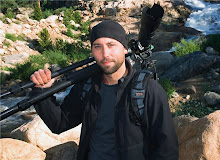The techniques I have learned over the years include panning, swirling and zooming multiple exposures. Many of these techniques can be replicated in computer software such as Adobe Photoshop, but I prefer to create the vast majority of my abstract images in camera. I feel it has a more fluid and organic feel than multiples created in post capture software. Pre-visualization is important and will come with time. As you begin to develop your personal vision, you will recognize subject matter and techniques that work well together. Be patient and keep shooting and experimenting and you will begin to see the image before you ever trip the shutter. Let’s get going with some tips and techniques to get you started in the world of abstract impressionist photography.
Metering the Image/Pre-visualization
I find that overcast light works best for creating multiples, although the warm soft light of sunrise or sunset can also be quite nice for multiples and montage effects. Working under these lighting conditions is quite easy as far gaining exposure is concerned. I like to keep my camera set on aperture priority and 3d matrix metering. Using a digital camera will allow you to take a test exposure and look at your histogram to see where your exposure falls. Changes can then be made using the (+/-) compensation on your camera. Its really that easy. In the past, some amount of math and compensation was needed for each individual exposure when stacking images in camera. With the multiple exposure functions in most modern digital cameras, Auto Gain is built into the custom function and the camera will take care of this compensation for you.
Multiple Exposure Techniques

An example of a 10 exposure multiple of flowers,
moving the camera in a random movement for each shot
Panning – Moving the camera up/down or left/right over the course of two or more multiple image exposures. Make sure to follow the natural flow of the subject matter. For example, when shooting trees, you would want to move the camera in and up or down motion for each shot.

An example of creative Panning at 2 second, moving
the camera in an upward motion.
Zooming – Using a zoom lens it is possible to make beautiful bursts of color while racking the zoom in/out during the course of exposure. It is best to use a shutter speed in the range of 1/2 second as far up to 2 seconds the majority of the time. It helps me to begin the zooming before I trip the shutter in order to have a smooth and even effect throughout the course of the exposure.

An example of Multiple Zooming, Zooming the lens
out for each exposure - a total of 6 shots
Multiple Zoom - Same as before, except using the multiple exposures function. For each image in the multiple, simply zoom in or out and then trip the shutter. Remember to refocus the image on each shot.

Another example of multiple exposure panning. I used
a 3 way pan/tilt head for acurate movement up and down
Swirling - Moving the camera in a circular motion around the subject. This technique is best executed using a tele-photo lens with a tripod collar attached to the body of the lens. With the lens mounted on a tripod, loosen the lens color and move the camera in a clockwise or counterclockwise rotation for each image. To keep a central point of focus through the image, try slightly recomposing the subject in the same position of the frame for each shot.

For this shot, I rotated the camera in a clockwise
direction for each shot over the coure of 8 images
Good luck and have fun.


No comments:
Post a Comment